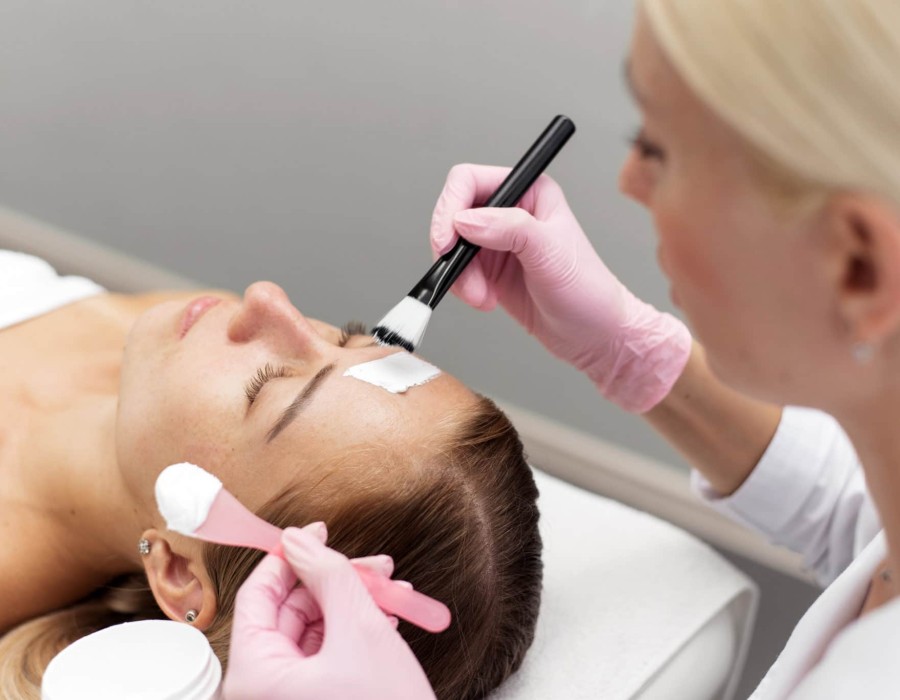Introduction
Understanding the intricate biology of the skin of the Cosmetologist and the complex composition of hair is pivotal in the field of cosmetology. At the core of effective skincare and haircare practices lies a deep comprehension of the underlying science governing these physiological structures.
Skin Biology: A Comprehensive Overview
The skin, the body's largest organ, serves as a protective barrier against external pathogens, regulates body temperature, and plays a crucial role in sensory perception. Comprising three primary layers—epidermis, dermis, and hypodermis—the skin's structure is intricately designed to fulfill diverse functions.
Epidermis: Shielding the Body
The outermost layer, the epidermis, consists mainly of keratinocytes, which undergo a constant process of renewal through cell turnover. Melanocytes, dispersed within the epidermis, contribute to skin pigmentation, safeguarding against harmful UV radiation. Additionally, Langerhans cells, a type of immune cell, are pivotal in recognizing and combating foreign invaders.
Dermis: Structural Support and Nourishment
Beneath the epidermis lies the dermis, a connective tissue rich in collagen and elastin fibers, providing structural support and elasticity to the skin. Fibroblasts within the dermis are responsible for synthesizing collagen, essential for maintaining skin integrity and firmness. The dermis also houses blood vessels, nerve endings, and appendages such as hair follicles and sweat glands.
Hypodermis: Insulation and Energy Storage
The deepest layer, the hypodermis, primarily comprises adipose tissue, serving as a cushioning layer, insulating the body against temperature fluctuations, and storing energy in the form of fat. Its strategic location facilitates the diffusion of nutrients to the skin layers above while providing thermal insulation.
Hair Composition: Unraveling the Complexity
Hair, a characteristic feature of mammals, exhibits remarkable diversity in texture, color, and density across individuals. Understanding the intricate composition of hair is essential for formulating effective haircare regimens tailored to individual needs.
Hair Shaft: Structural Integrity
The hair shaft, primarily composed of keratinized cells, emerges from the hair follicle and extends above the skin surface. Its structure varies, with the cortex imparting strength and resilience, the medulla providing structural support, and the cuticle serving as a protective outer layer, safeguarding against damage and moisture loss.
Hair Follicle: An Active Matrix
The hair follicle, embedded within the dermis, houses the hair bulb, a dynamic structure responsible for hair growth. Papilla cells at the base of the follicle play a crucial role in nourishing the growing hair strand, while the matrix cells undergo rapid proliferation, driving hair growth and renewal.
Hair Cycle: A Continuous Renewal Process
Hair growth occurs in cyclical phases—anagen (growth phase), catagen (transitional phase), and telogen (resting phase)—dictated by complex hormonal and genetic factors. Understanding the dynamics of the hair growth cycle is paramount in devising strategies to promote healthy hair growth and prevent hair loss.
Conclusion
In conclusion, a profound understanding of skin biology and hair composition through a Cosmetologist in Riyadh forms the cornerstone of effective cosmetology practices. By delving into the intricate mechanisms governing these physiological structures, cosmetologists can tailor personalized skincare and haircare solutions that optimize health and enhance aesthetic appeal. Embracing the synergy between science and beauty empowers individuals to unlock the full potential of their skin and hair, fostering confidence and well-being.






Comments